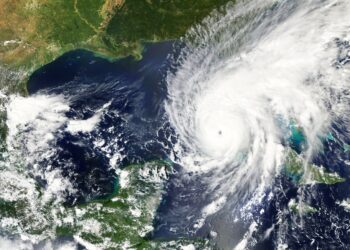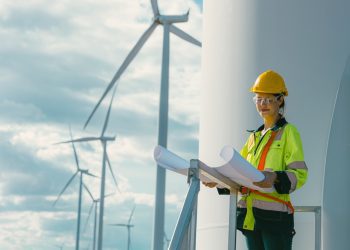Infrastructure is more than roads and bridges. It is even more than public transit systems, the electric grid and storm water systems. It is the things we need for a society to function – which means our land, water and climate are the most fundamental infrastructure we have. They provide the water we drink, grow the food we eat, clean the air we breathe, and protect the places we live.
Just like the roads and bridges that are crumbling, all this infrastructure needs urgent attention if it is going to support the expanding needs of our people and withstand increasing threats.
The $1.2 trillion Infrastructure Investment and Jobs Act recognizes all of this in a bigger, bolder way than ever before. It would help address long-standing needs to improve the roads, culverts, levees, ports and other structures we build and make significant changes to support the natural resources we must manage.
In addition, the Act would create and sustain millions of good-paying jobs, which will also meet immediate needs of people still suffering from the economic effects of the global pandemic. Specifically, there are many ways this legislation supports nature and climate for the benefit of all of us.
This is a rare opportunity to invest in America’s infrastructure and prepare our nation for a cleaner, stronger future.
The bill lays the foundation to address climate change through game-changing investments in clean energy and transportation. By modernizing the electric grid, supporting a transition to renewable energy and cleaner transportation, increasing energy efficiency, enabling greater electric vehicle adoption and more, this bill advances the kind of infrastructure we need to lower emissions for a safer, more sustainable future. Polls show strong support for climate action in this infrastructure bill, which includes:
Grid modernization: Nearly $28 billon to modernize and improve the reliability and resilience of the electric power grid
Energy technology: More than $20 billion to commercialize emerging clean energy technologies, including carbon capture, utilization, and storage
Energy efficiency: Programs to reduce both emissions and costs across the residential, public, commercial, and industrial sectors, and additional new investments in the
Weatherization Assistance Program and Energy Efficiency and Conservation Block Grant Program
Reducing methane emissions: A $4.7 billion program to plug, remediate and restore orphaned oil and natural gas wells
Creating new economic opportunities in mining communities: $500 million to promote the development of solar and other clean energy on abandoned mine lands
Public transit: $39 billion of new funding for public transit, plus$66 billion for freight and passenger rail
Electric vehicle adoption: $7.5 billion to expand the electric vehicle charging network and $5 billion to help communities purchase electric buses
Providing carbon-free power through safe operation of nuclear plants: A $6 billion program to support existing safely operating nuclear facilities and other support for next-generation advanced nuclear reactors
Reducing local air pollution from ports: $400 million to lower emissions from trucks and other equipment at airports and seaports, including through electrification.
Enhancing Resilience for Safer Communities
The bipartisan infrastructure bill includes investments in resilience to reduce risk and impact of disasters such as storms, floods, wildfire and drought.
Coastal resilience: Nearly $500 million to improve resilience of coastal communities by restoring natural ecosystems and increasing protection for communities from coastal hazards, plus a similar amount for mapping, observations, and modelling that can help protect lives and property during extreme weather events
Drought: $8.3 billion to secure critical water supplies in the drought-stricken West through investments in aging infrastructure, water storage and water recycling while conserving healthy rivers and fish and wildlife habitat
Wildfire: Nearly $3.4 billion that would improve areas at high risk for wildfires and support wildland firefighting, and $2.1 billion for forest ecosystem restoration
Floods and other disasters: $3.5 billion for federal risk reduction investments under the flood insurance program, $1 billion under a FEMA pre-disaster risk reduction program, and $500 million to establish a resilience revolving loan fund, plus financial and technical assistance to states and communities to reduce risk of flood damages
Lands, Waters and Wildlife
The bill has critical investments in nature to ensure clean water, clean air, healthy fish and wildlife habitat and all of the essential services and benefits nature provides.
Wildlife crossings: $350 million for a wildlife crossing safety pilot program, plus ensuring that projects and strategies to reduce wildlife-vehicle collisions are eligible for block grant funds
Fish and wildlife habitat: $500 million for U.S. Army Corps of Engineers ecosystem restoration projects, plus $1.9 billion for Environmental Protection Agency geographic programs benefiting areas such as the Great Lakes, Chesapeake Bay, Long Island Sound, Puget Sound and Gulf of Mexico
Natural infrastructure: Definition of “natural infrastructure” and including these features (dunes, marshes, floodplains and more) as acceptable tools eligible for funding to enhance resilience.
(courtesy Nature Conservancy)












